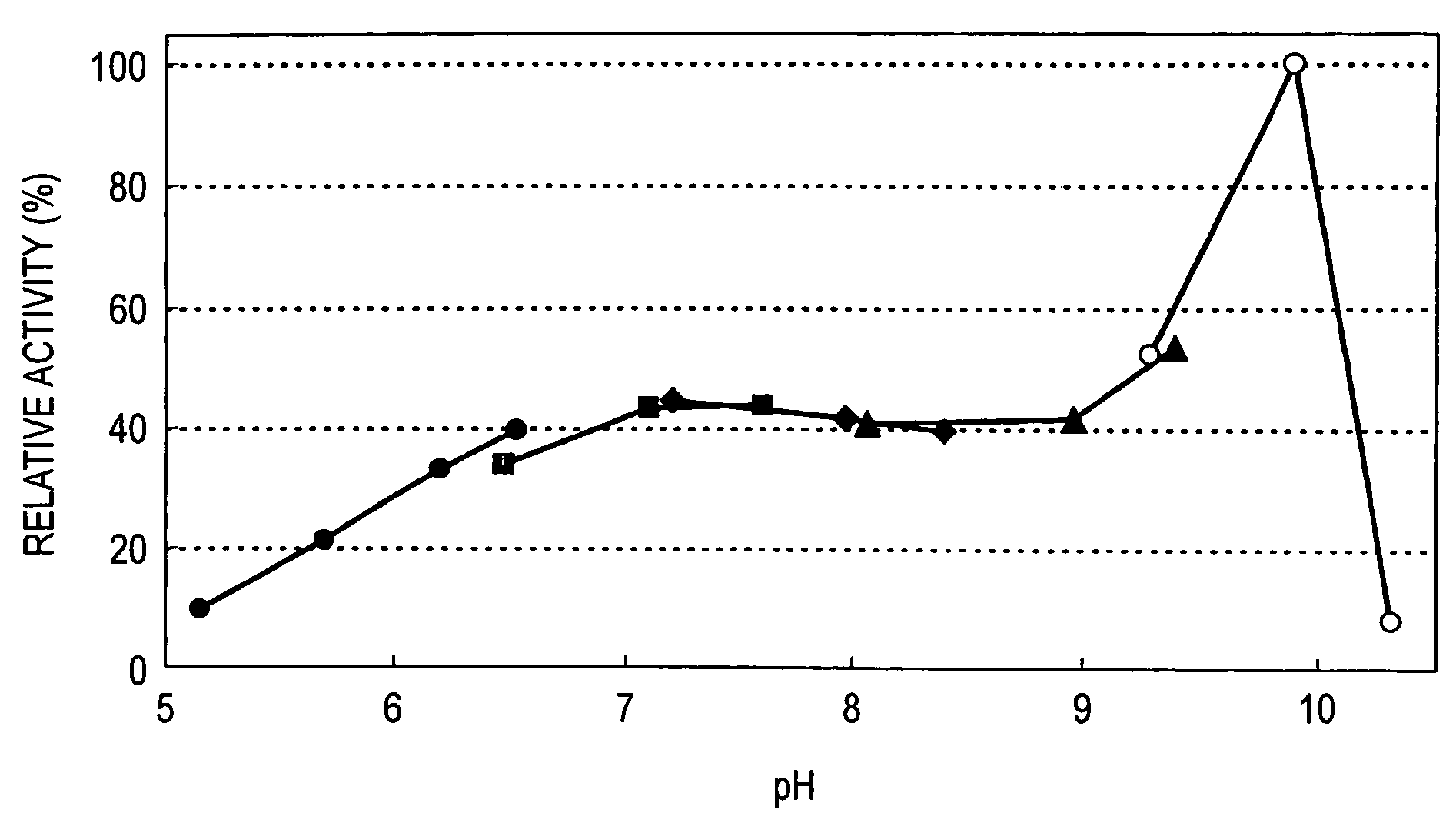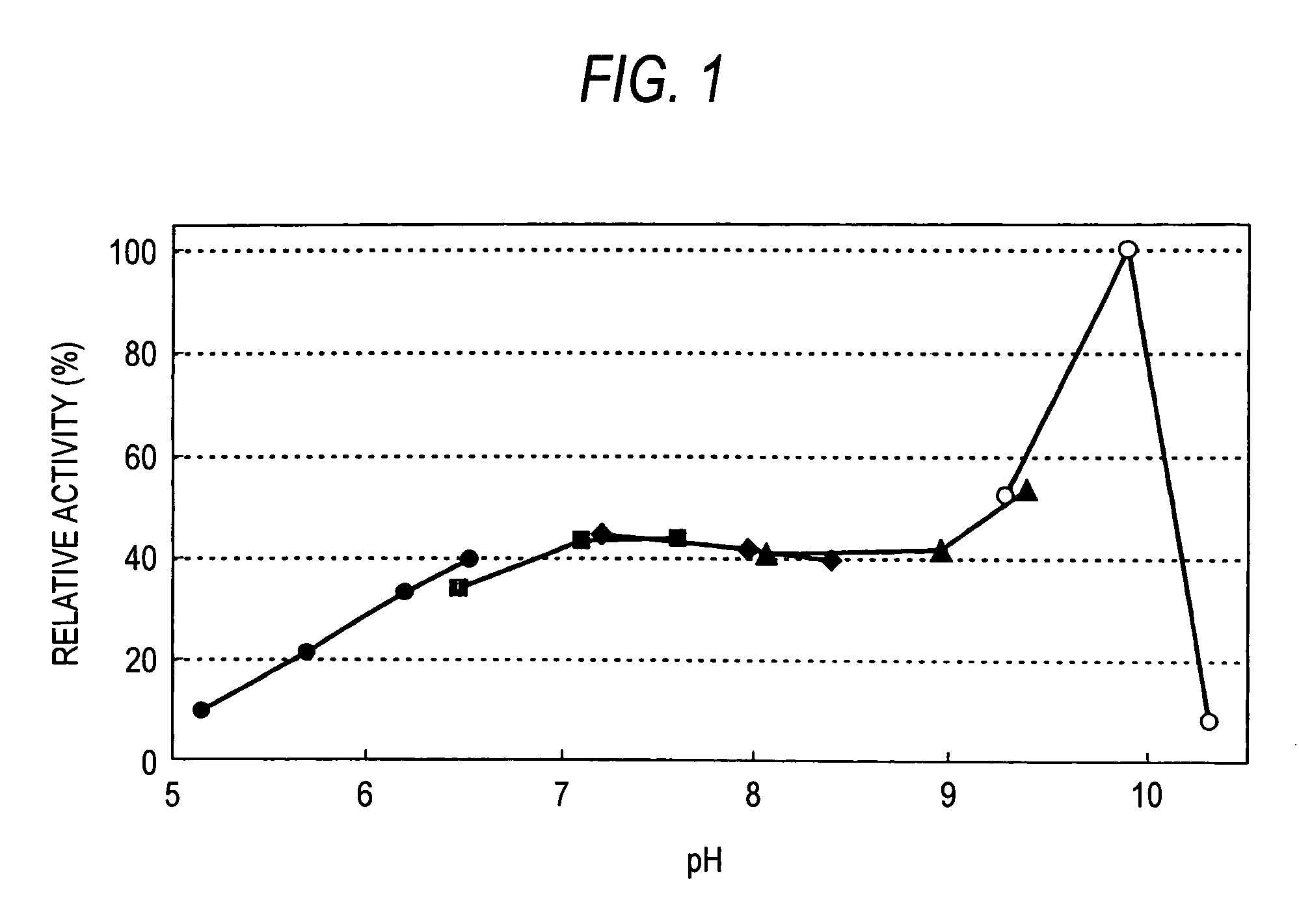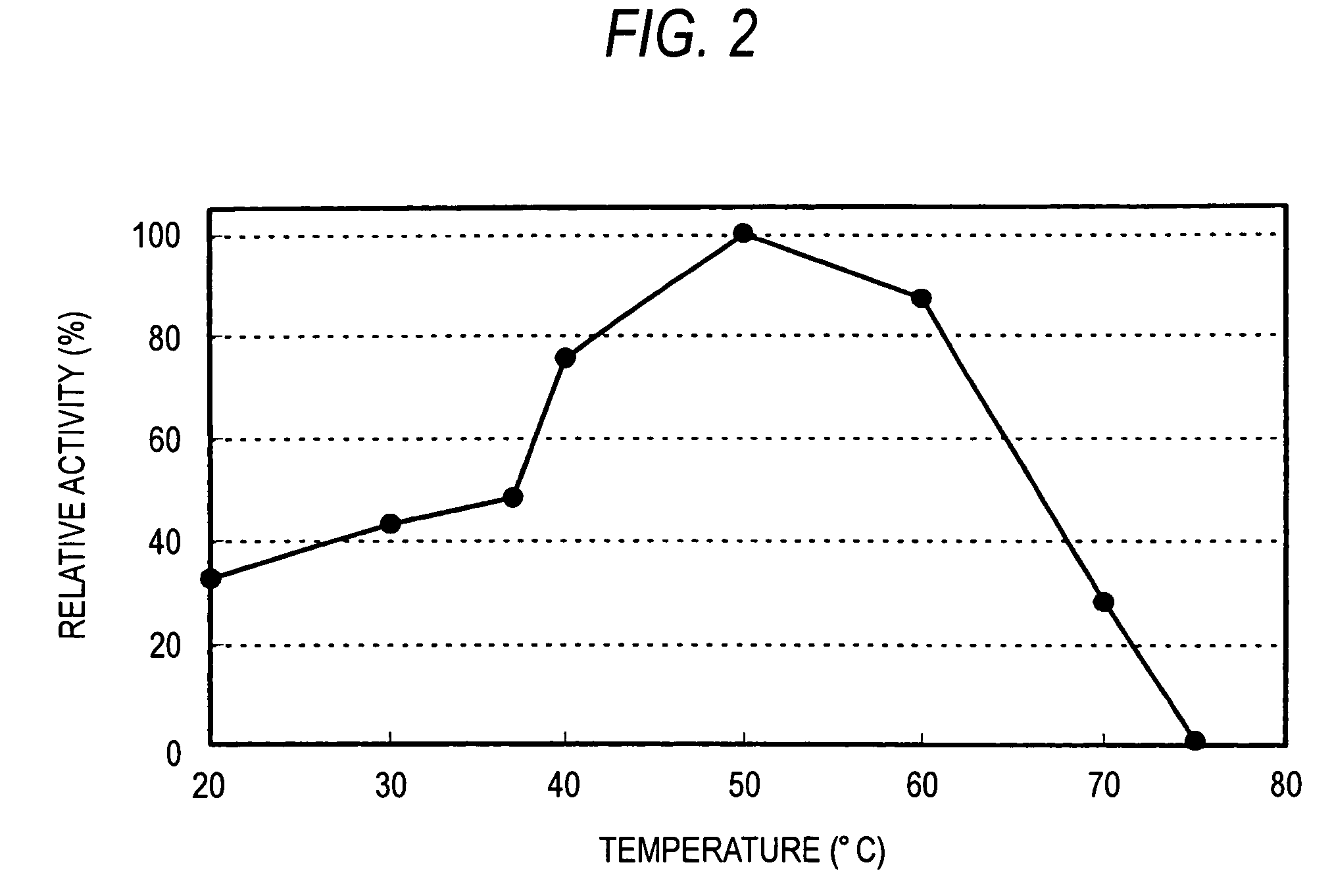Glycerol kinase, which has high resistance against preservative
a glycerol kinase and high resistance technology, applied in the field of gene encoding a novel glycerol kinase, can solve the problem of low resistance of glycerol kinase, and achieve the effect of easy transfection
- Summary
- Abstract
- Description
- Claims
- Application Information
AI Technical Summary
Benefits of technology
Problems solved by technology
Method used
Image
Examples
example 1
Separation of Chromosomal DNA from Cellulomonas sp. JCM2471
[0093]The chromosomal DNA of Cellulomonas sp. JCM2471 was separated by the following method. One platinum loop of the bacterial strain was inoculated in an LB culture broth (5 ml charged amount / 30-ml test tube; 1.0% polypeptone, 0.5% yeast extract, 1.0% NaCl, pH 7.4) and cultured with shaking at 30° C. for overnight. The bacterial cell was recovered from 1 ml of the bacterial cell by centrifugation (12,000 rpm, 10 minutes, 4° C.). The chromosomal DNA was extracted from the recovered bacterial cell, using MagExtractor-genome kit (manufactured by Toyobo Co., Ltd.) according to the procedures described in the manual. The chromosomal DNA was obtained at about 20 μg from 1 ml of the bacterial cell.
example 2
Amplification of Glycerol Kinase Gene by PCR
[0094]Primers for polymerase chain reaction (PCR) were prepared on the basis of the nucleotide sequences of glycerol kinase from Escherichia coli (E. coli), Bacillus subtilis, and Pseudomonas aeruginosa, of which their cloning is currently reported. The nucleotide sequences of SEQ ID NO:3 in the sequence listing and SEQ ID NO:4 in the sequence listing show the PCR primers. By mixing 100 ng of the DNA obtained in Example 1, 200 pmol of each of the primers, 10 μl of a dNTP mixture, 10 μl of a reaction buffer, and 2.5 U of AmpliTaq DNA polymerase (manufactured by Perkin Elmer), a final volume of reaction liquid mixture was adjusted to be 100 μl. This was subjected to PCR including repeating 30 times of a cycle of a modification reaction at 94° C. for one minute, an annealing reaction at 45° C. for one minute and an extension reaction at 72° C. for 3 minutes. Consequently, a fragment of about 800 bp as an intended size was amplified. The nucle...
example 3
Cloning of Full-Length Glycerol Kinase Gene
[0095]About 2 μg of the chromosomal DNA obtained in Example 1 was digested with various restriction enzymes, separated by 0.7% agarose gel electrophoresis and transferred onto a nitrocellulose filter. The filter was subjected to Southern hybridization according to the protocol attached to the reagents, using the PCR product obtained in Example 2 as probe and ECL direct nucleic acid labeling and detection system (Amersham Biosciences), to screen for fragments of the glycerol kinase gene. Consequently, the DNA fragment containing the full-length glycerol kinase gene was detected as a fragment of about 6.5 kb after cleavage with KpnI (manufactured by Toyobo Co., Ltd.) and NotI (manufactured by Toyobo Co., Ltd.).
[0096]Then, the DNA fragment was recovered from the agarose gel using MagExtractor-PCR & gel clean up-kit (manufactured by Toyobo Co., Ltd.) according to the procedures described in the manual. Alternatively, 0.5 μg of puCBM21 (Boehring...
PUM
| Property | Measurement | Unit |
|---|---|---|
| pH | aaaaa | aaaaa |
| concentration | aaaaa | aaaaa |
| temperature | aaaaa | aaaaa |
Abstract
Description
Claims
Application Information
 Login to View More
Login to View More - R&D
- Intellectual Property
- Life Sciences
- Materials
- Tech Scout
- Unparalleled Data Quality
- Higher Quality Content
- 60% Fewer Hallucinations
Browse by: Latest US Patents, China's latest patents, Technical Efficacy Thesaurus, Application Domain, Technology Topic, Popular Technical Reports.
© 2025 PatSnap. All rights reserved.Legal|Privacy policy|Modern Slavery Act Transparency Statement|Sitemap|About US| Contact US: help@patsnap.com



